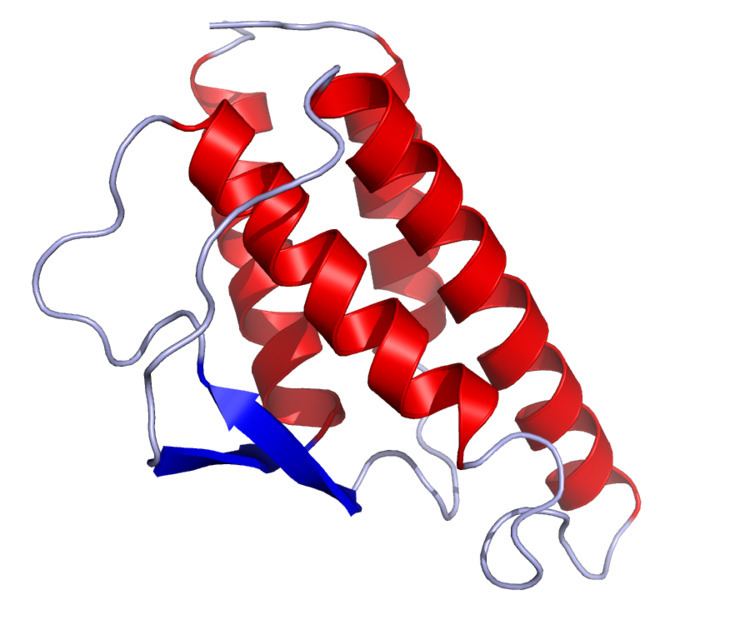Entrez 3565 | Ensembl ENSG00000113520 | |
 | ||
Aliases IL4, BCGF-1, BCGF1, BSF-1, BSF1, IL-4, interleukin 4 External IDs OMIM: 147780 MGI: 96556 HomoloGene: 491 GeneCards: IL4 | ||
The interleukin 4 (IL4, IL-4) is a cytokine that induces differentiation of naive helper T cells (Th0 cells) to Th2 cells. Upon activation by IL-4, Th2 cells subsequently produce additional IL-4 in a positive feedback loop. The cell that initially produces IL-4, thus inducing Th0 differentiation, has not been identified, but recent studies suggest that basophils may be the effector cell. It is closely related and has functions similar to Interleukin 13.
Contents
Function
IL-4 has many biological roles, including the stimulation of activated B-cell and T-cell proliferation, and the differentiation of B cells into plasma cells. It is a key regulator in humoral and adaptive immunity. IL-4 induces B-cell class switching to IgE, and up-regulates MHC class II production. IL-4 decreases the production of Th1 cells, macrophages, IFN-gamma, and dendritic cell IL-12.
Overproduction of IL-4 is associated with allergies.
Inflammation and wound repair
Tissue macrophages play an important role in chronic inflammation and wound repair. The presence of IL-4 in extravascular tissues promotes alternative activation of macrophages into M2 cells and inhibits classical activation of macrophages into M1 cells. An increase in repair macrophages (M2) is coupled with secretion of IL-10 and TGF-β that result in a diminution of pathological inflammation. Release of arginase, proline, polyaminases and TGF-β by the activated M2 cell is tied with wound repair and fibrosis.
Receptor
The receptor for Interleukin-4 is known as the IL-4Rα. This receptor exists in 3 different complexes throughout the body. Type 1 receptors are composed of the IL-4Rα subunit with a common γ chain and specifically bind IL-4. Type 2 receptors consist of an IL-4Rα subunit bound to a different subunit known as IL-13Rα1. These type 2 receptors have the ability to bind both IL-4 and IL-13, two cytokines with closely related biological functions.
Structure
IL-4 has a compact, globular fold (similar to other cytokines), stabilised by 3 disulphide bonds. One half of the structure is dominated by a 4 alpha-helix bundle with a left-handed twist. The helices are anti-parallel, with 2 overhand connections, which fall into a 2-stranded anti-parallel beta-sheet.
Discovery
This cytokine was co-discovered by Maureen Howard and William E. Paul as well as by Ellen Vitetta and her research group in 1982.
The nucleotide sequence for human IL-4 was isolated four years later confirming its similarity to a mouse protein called B-cell stimulatory factor-1 (BCSF-1).
Animal studies
IL-4 has been found to mediate a crosstalk between the neural stem cells and neurons that undergo neurodegeneration, and initiate a regeneration cascade through phosphorylation of its intracellular effector STAT6 in an experimental Alzheimer's disease model in adult zebrafish brain.
Clinical significance
IL-4 also has been shown to drive mitogenesis, dedifferentiation, and metastasis in rhabdomyosarcoma. IL-4, along with other Th2 cytokines, is involved in the airway inflammation observed in the lungs of patients with allergic asthma.
